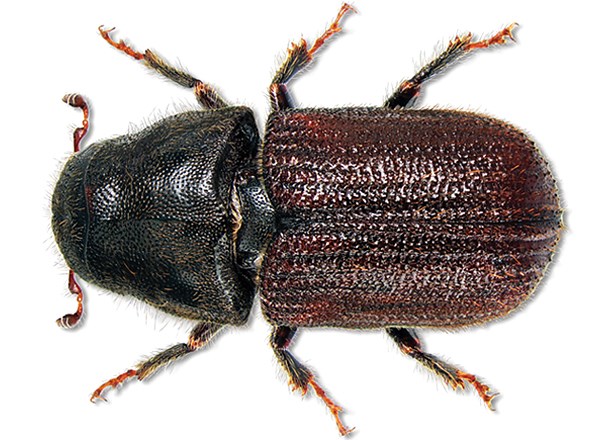Many of the reporters providing coverage on the mountain pine beetle epidemic in this province are too young to know how it all truly unfolded and led to last week’s announcement of Canfor closing the PG Pulp Mill.
It’s a devastating impact on a community I called home from 1980 to 2004. I was president of the Northern Forest Products Association, which represented the interests of all the sawmills in the northern half of B.C. from the Alberta border to Terrace.
More importantly, I was the key person on the mountain pine beetle file for the northern forest industry and fought to contain its spread and inform British Columbians, and those MPs in Ottawa, what was occurring and the consequences if swift action was not taken.
Before I say any more, your readers should know that the mountain pine beetle has always been in our forests and always will be.
It generally feeds off weaken or old lodgepole pine trees but its impact has always been controlled by very cold winters that kill 95 per cent of the beetle population. However, as winters warmed up in the late 90s the beetle found a foothold in Tweedsmuir park and its populations started to explode. The forest industry in and around Burns Lake to Smithers began sounding the alarm, as were the community leaders, that swift action was required. The NFPA took up the fight in 1998 with a massive public awareness campaign in BC and numerous trips were made to visit MPs in Ottawa with detailed presentations to all three federal parties.
We had a simple but clear message: the mountain pine beetle would devastate B.C. interior forests and lead to eventual and massive shutdowns of lumber and pulp of operations in the interior.
There is not one federal or provincial politician from that time who could claim not to have known. The NDP were in power then, and while Gordon Wilson, the then Minister of Forests, was equally concerned and supportive he could not convince his cabinet colleagues in Victoria to declare a state of emergency, even as the beetle was spreading from Tweedsmuir Park east and then south devastating all the lodgepole pine in its path.
British Columbians will also have forgotten that attempts to log the initial infestation in the park to avoid its spread was opposed vigorously by the entire environmental movement and the government. They somehow felt it was just nature at work and the park was somehow sacred and no serious logging in the park should be undertaken. None was.
What of course unfolded was a historic firestorm of beetles with immense populations that ravaged and killed over 85 per cent of the lodgepole pine forests in the interior, including young plantations, over the next 10 years.
NFPA member attempts to speed up logging to contain the spread of the beetle were met with opposition from within government, thereby allowing the vast areas of healthy timber to be infested and die. The loss of government revenue in terms of stumpage alone from that beetle killed timber would most likely today clear the provincial debt in B.C. and provide much needed health care funding to our interior communities.
That’s what has been lost through inaction and I challenge any politician to say otherwise. Yes, portions of those dead forests were logged over the last 25 years but the fibre was not the same value and many areas simply died because the size of the devastation was too great.
The prevailing strategy from within government in 2000 was to not overreact and a belief that a cold winter would kill the beetle, as it had in the past, and things would return to normal. There were similar views from within senior ranks of the industry, and my own members of the NFPA in fact, who failed to believe that the epidemic was as serious as the NFPA reported it to be. I take no pleasure in saying that and consider our media campaign one of my great career failures.
The NFPA carried out yearly ground surveys tracking the spread of the beetle infestation and reported those results to the MOF and the media. I did 30 to 40 speaking engagements in B.C. and Ottawa and over 200 media interviews each year, from 1998 to 2003, pleading for governments to relax the regulations to allow faster access to infested areas. But those requests were never taken seriously or rejected until it was much too late. And by then the newly elected Liberal government view was that the epidemic was so large that nothing could be done to halt it. That was indeed true. The epidemic finally did collapse after all the food source, the lodgepole pine, was killed.
It took 15 to 24 years to begin to feel the full effects of the epidemic but those effects, namely closure of interior mills due to a lack of timber have occurred, with PG Pulp being one of the latest casualties. Regrettably, there will be more closures in the years ahead as the fibre supply shortages continue and the high cost of extraction in B.C. increases.
To the best of my knowledge, there has been no comprehensive strategy implemented to address the epidemic and its fallout in 24 years. Today, other than helping displaced workers, the only thing the province can and should do is to implement an aggressive reforestation program to bring back those beetle decimated areas as quickly as possible to provide a future for a renewable, high paying industry that produces environmentally friendly building products and generates quality jobs for young families.
Greg Jadrzyk, Former President, Northern Forest Products Association (NFPA)




